How Malachite is made:
| Origin: mineral and artificial | Mineral malachite (at Mineralogy Database) |
Natural mineral: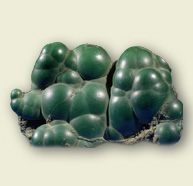 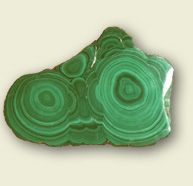 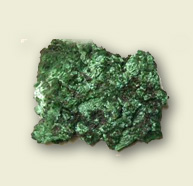 Malachite from Madagascar, and other places |
|
| Natural variety of pigment | The natural mineral is crushed, ground to a powder and washed. |
| Artificial variety of pigment | Commonly prepared in the Middle Ages in Europe the essence of its production is to add potash, lime and sal ammoniac to a soluble copper salt such as copper sulphate or sulphite. Reaction of copper(II) sulfate with sodium carbonate. |
| In the lab | |
| Materials needed: | Copper(II) sulfate (CuSO4 · 5 H2O), sodium carbonate (Na2CO3, dehydrated) |
| Safety (MSDSs): | Copper(II) sulfate (at Fisher scientific) |
| Method: | 12.5 g CuSO4 · 5 H2O are solved in 50 ml deionized water. A solution of 5.8 g Na2CO3 in 55 ml deionized water is added slowly to the vigorously stirred solution of copper(II) sulfate. After adding of approximately 40 ml solution strong reaction sets in and carbon dioxide is being developed. The remaining solution should be added slowly after the onset of the reaction. The reaction mixture is let to stand for one to two days at temperatures between 5 and 10°C in order to obtain finely cristalized precipitate. The suspension is decanted two times with deionized water, filtered off and washed thoroughly. |
Illustration of the process:
Making malachite in the laboratory:
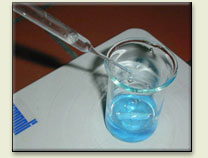 |
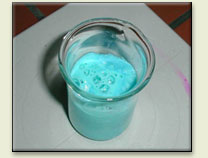 |
|
|
|
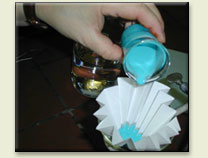 |
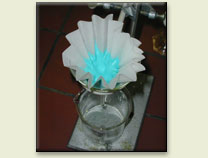 |
|
|
|
The ground pigment:
Pile of ground Malachite
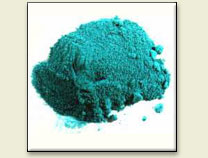
Other greens
(intro) - Cobalt green - Copper resinate - Emerald green - Green earth - Malachite - Verdigris - Viridian
(intro) - Cobalt green - Copper resinate - Emerald green - Green earth - Malachite - Verdigris - Viridian

